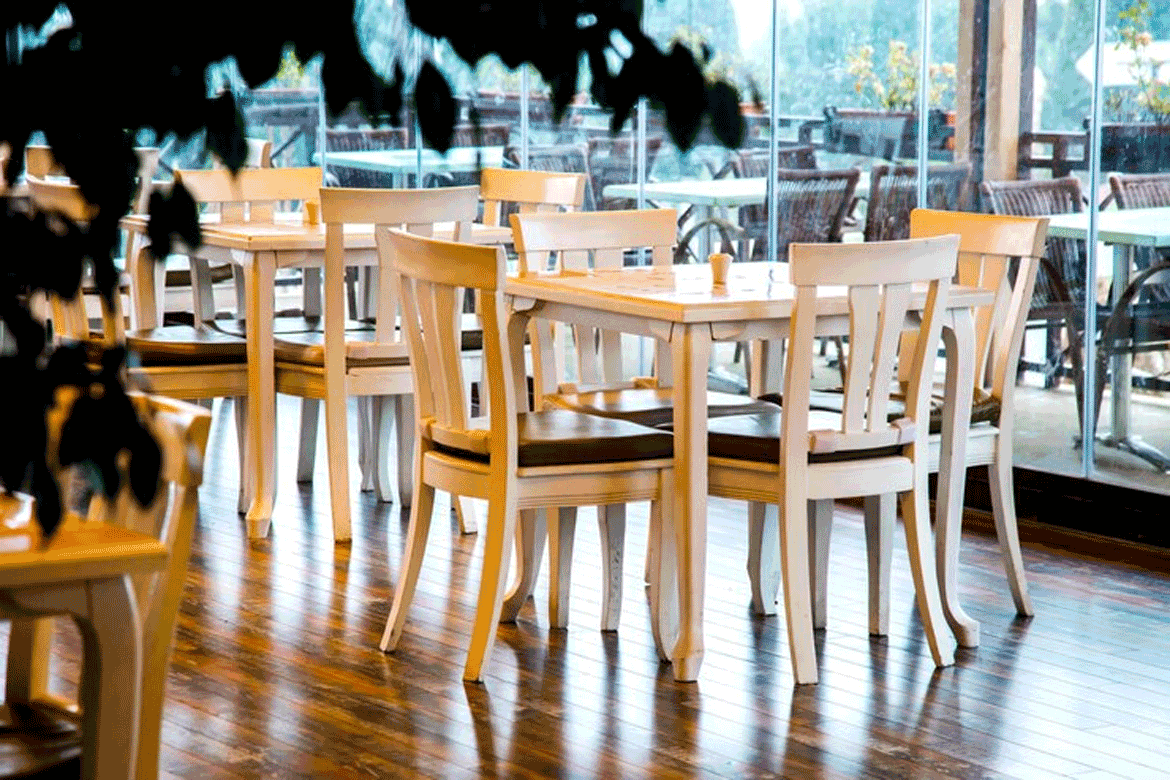Commercial-Grade Restaurant Furnishings: An Ergonomic Perspective
Because practicality and aesthetics collide in the dynamic world of commercial-grade restaurant furniture, ergonomic considerations are crucial. Comfort and furniture design are important factors to take into account as businesses strive to provide great eating experiences.
The complexity of ergonomic factors in commercial-grade restaurant furniture is examined in this article, along with how these elements enhance both the overall function of a restaurant and the experience of its patrons.
Recognising Ergonomics
The science of creating restaurant furniture with ergonomics in mind to enhance overall effectiveness and human well-being is often overlooked in favour of aesthetics. Factors like productivity, efficiency, and even economic impact are included, going beyond comfort alone.
Including ergonomic ideas into restaurant design is not just a design choice; it is a calculated move to make an atmosphere that appeals to patrons and makes staff members happy.
From an ergonomic standpoint, using such ideas in business settings goes beyond aesthetics. Long-term advantages for firms, such heightened employee productivity and consumer loyalty, are also included.
By aligning design choices with ergonomic principles, restaurants can gain a competitive edge in a sector where the patron experience is paramount.
Commercial-Grade Restaurant Furniture Types
As diverse as the restaurants themselves are, so too is the furnishings selection. Traditional booths and chairs are available, as well as contemporary barstools and couches. Similar to this, tables come in a range of sizes and shapes, each serving a particular function.
Institutions are investigating reclining and modular seating options in the current environment to guarantee flexibility in meeting a range of customer needs.
Folding tables, communal tables, and tables with adjustable heights are among the table alternatives that encourage a social dining experience. Businesses want to create unique spaces that represent their company identity and appeal to their target audience, demonstrating the benefits of personalisation.
Seating with Ergonomics in Mind
The nuances that determine comfort become more important when it comes to sitting. The overall ergonomic profile of a chair or booth is greatly influenced by the seat’s depth and height, the design of the backrest, and the height of the armrests.
Longer dining sessions without discomfort are made possible by the inclusion of lumbar support elements and reclining options, which enhance the whole experience.
When creating an atmosphere that accommodates a range of body types and preferences, seating angles—which are occasionally disregarded—are essential. A thoughtfully designed seating arrangement takes into account both patron preferences and the spatial dynamics of the restaurant, creating a welcoming and enjoyable atmosphere.
Considering Ergonomics in Tables
Tables are also carefully considered in terms of their height, shape, and size throughout the ergonomic design process. Particularly in areas with heavy traffic, materials and durability are crucial. In addition to the necessities, surface texture, edge profiles, and even cable management options enhance the overall ergonomics of the tables.
Accessibility assumes significance, since the design guarantees that individuals with diverse needs may effortlessly utilise the table area. In addition to reaching a wider audience, this inclusivity aligns with contemporary values like diversity and equitable access.
Durability Is Important in Commercial Settings
Due to frequent spills and continuous use, restaurant furniture undergoes unparalleled wear and strain. Durability thus becomes a crucial factor to take into account when choosing furniture of a professional calibre. The durability, ease of maintenance, and stain resistance of the furniture guarantees that the initial investment will pay off in the long run.
To make sure that the furniture can withstand heavy use without sacrificing comfort or safety, quality assurance testing is essential. Materials that are recyclable and sustainable boost longevity while also complementing the growing focus on environmentally friendly activities.
Ergonomics and Aesthetic Design
The aesthetic significance of furniture for commercial restaurants should not be overlooked, even while functionality is crucial. Comfort and aesthetics balancing has evolved into a kind of art, with companies trying to design visually appealing spaces that are true to their brands.
Design elements can be combined harmoniously thanks to customisation options including colour psychology, lighting considerations, and spatial arrangement.
In today’s competitive world, using furniture strategically to create a memorable dining experience and express a brand story is a crucial asset. With the right selection and installation, outdoor furniture can extend the eating experience outside of the house and elevate the ambiance.
Technology Use in Furniture Design
The integration of smart technologies is the way forward for restaurant furnishings intended for commercial use. In addition to improving the dining experience, wireless charging capabilities, digital displays in tables, and Internet of Things-enabled furniture show a commitment to innovation.
With the development of technology, furniture becomes an increasingly dynamic and interactive part of the entire eating experience.
In order to stay ahead of the curve in a constantly evolving industry, restaurants that adopt these technology advancements present themselves as progressive businesses that cater to tech-savvy patrons.
Encouraging Restaurant Spaces with Excellent Ergonomics
The creation of exceptional dining experiences depends heavily on ergonomic considerations. By carefully aligning design decisions with principles that prioritise comfort, functionality, and safety, restaurants may enhance the entire experience for both patrons and staff.
Together, practicality and aesthetics create a natural balance that fosters a welcoming and indulgent environment for patrons. Every element of the restaurant—from the original seating arrangements to the creative use of technology—contributes to its story, defining its identity and shaping patron perceptions.
Businesses striving for longevity as well as continuous greatness find that the need to continuously study, adapt, and innovate in restaurant furniture design is becoming increasingly important as the sector develops.
By encouraging ergonomic excellence, designing environments that stick in the minds of their patrons, and taking the lead in a sector that is always evolving, restaurants may surpass the average.
READ MORE ARTICLES:
Benefits of MLS for Sellers and Buyers
Roofers Need to Know Why Digital Marketing Is Important
